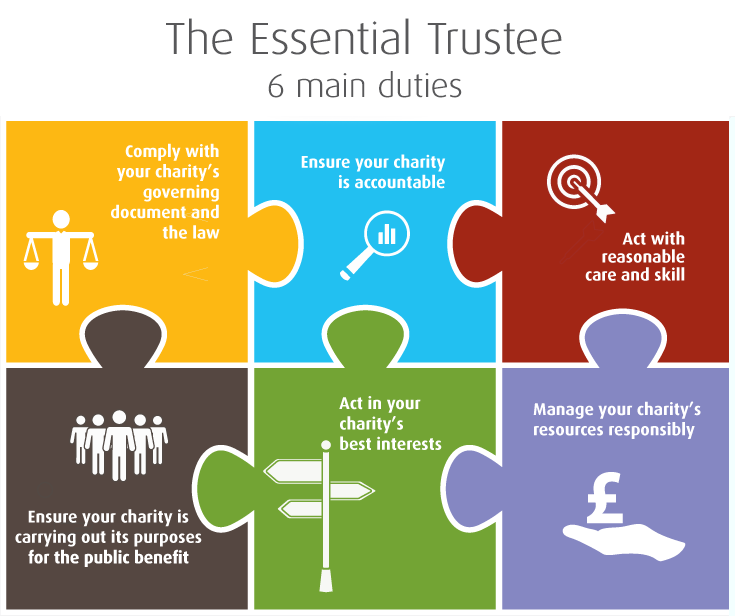Recruiting for your governing body
From Our Toolkit
Your chosen legal structure can determine the type of governing body you have leading your organisation. For example if have decided to form a group within a larger organisation you may have chosen to be an unincorporated association which has a management committee or steering group. Alternatively if you have chosen to be a separate legal entity with charitable or companies status you would have a board of trustees / directors.
Roles and responsibilities
Whatever form your governing body takes there are keys roles and responsibilities which are applicable to all organisations. The Charities Commission’s 5 Minute Guides provides information on this. The Resource Centre outlines the responsibilities of the managing group and the roles of officers clearly.
For charities in England & Wales:
The Charity Commission’s publication The Essential Trustee is the go to guide for trustees. You can also watch an introduction to the topic on their YouTube channel.
If you legal structure has charitable status you will need a board of trustees. The National Council for Voluntary Organisations (NCVO) has clear guidance on what is a board and what is a trustee.
For charities in Scotland:
The Scottish Charity Regulator have an informative presentation about the role of the charity trustee on their YouTube channel as well as advice for first time charity trustees.
Recruiting and retaining trustees
When recruiting trustees, or members of any governing body, it is best practice to advertise widely so that you are drawing from a large pool of prospective candidates. Your advert should clearly outline the skills you are looking for in the successful candidate and why they will be beneficial to the running of your organisation.
For advice on recruiting trustees:
This advice is aimed at museums but the principles are applicable to a range of organisations. Your local council for voluntary service will be able to help in advertising any roles.
- Reach Volunteering: Guide – Recruiting and retaining trustees
- South East Museum Development – Recruiting trustees in 10 steps
Trustee responsibilities and liabilities
Once you have recruited it is important that each of your trustees understand their roles and responsibilities. The Charity Commission provides advice on this topic for organisations in England and Wales in The essential trustee – what you need to know, what you need to do. A summary of the responsibilities of a trustee is depicted in the jigsaw infographic here. NCVO also provides advice in their Good Trustee Guide.
Trustee role descriptions
For each of the key trustee roles it is best practice to have a role description so the post holder and the rest of the board understands the responsibilities and limits of the role. NCVO provides a range of templates that you can use as a starting point and tailor them for your organisation. Reach Volunteering also have model role descriptions for the key positions.
Trustee handbook
On joining the governing body of your organisation, all members should receive a handbook or wlcome pack which outlines the role of the group, the roles and responsibilities of the group members and all the essential information about your organisation. It is best practise to go through the handbook with each group member as part of their induction. The Charity Commission provides a list of information which should be included in a model Trustee Welcome Pack.
Other examples are available which can be used as templates and adapted for your own organisations:
